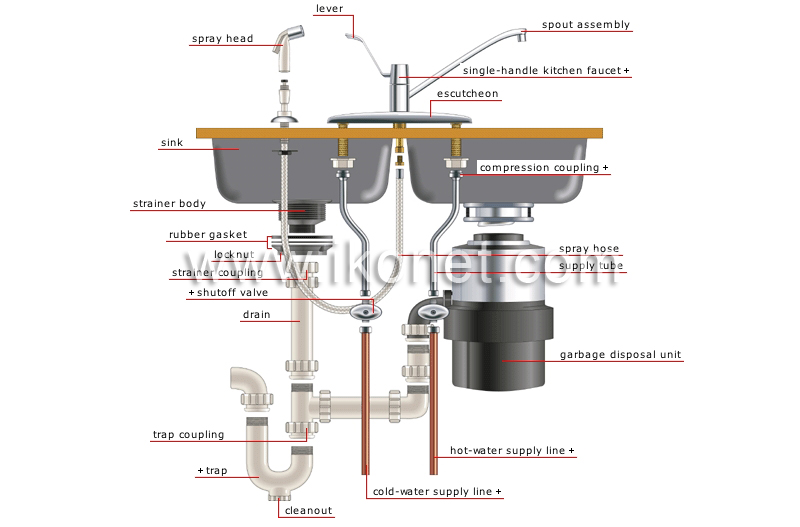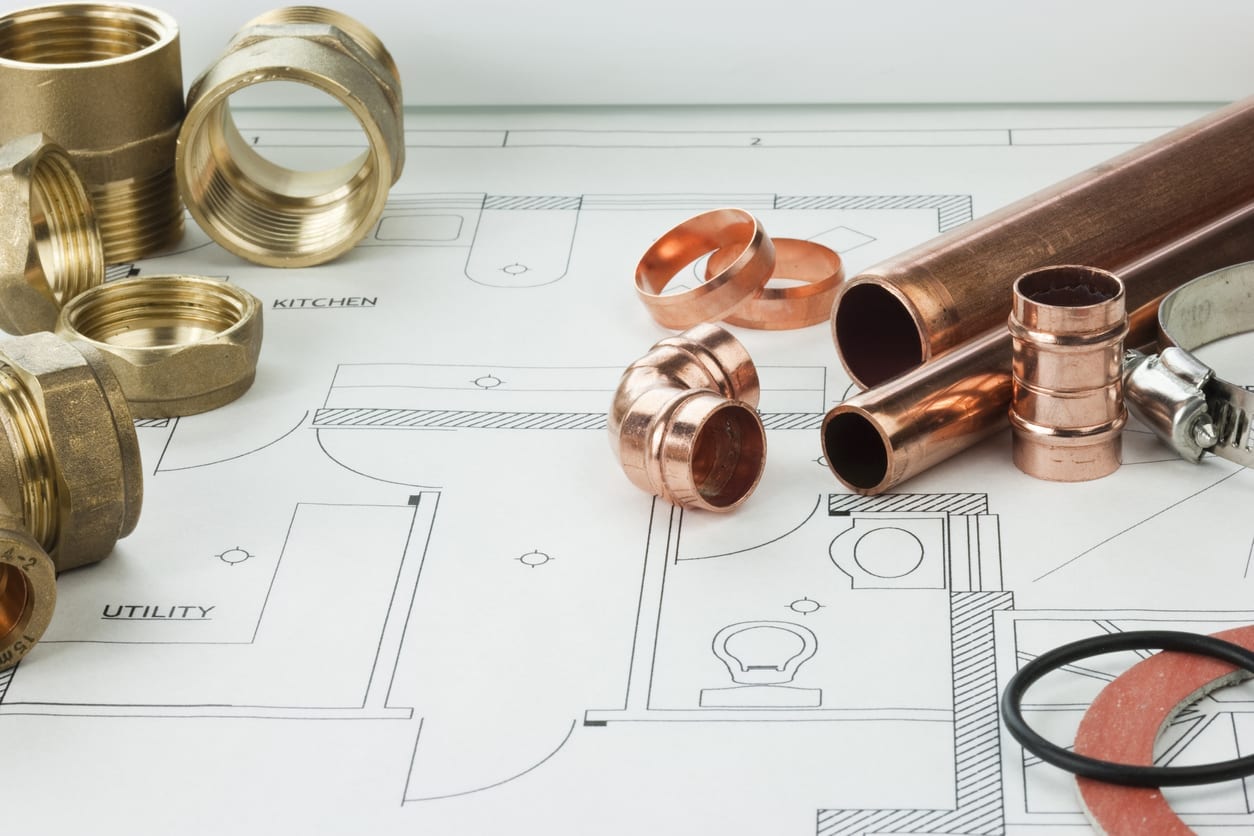We have stumbled on the article on Anatomy of a House: Understanding the Components below on the web and believe it made perfect sense to quickly share it with you in this article.

Recognizing exactly how your home's pipes system works is crucial for each home owner. From delivering tidy water for alcohol consumption, cooking, and showering to securely eliminating wastewater, a properly maintained plumbing system is important for your household's wellness and comfort. In this detailed overview, we'll explore the elaborate network that composes your home's pipes and offer tips on maintenance, upgrades, and dealing with usual problems.
Intro
Your home's plumbing system is more than simply a network of pipes; it's a complex system that ensures you have access to clean water and effective wastewater elimination. Knowing its elements and how they interact can aid you protect against pricey repair work and make sure every little thing runs efficiently.
Basic Parts of a Pipes System
Pipelines and Tubes
At the heart of your plumbing system are the pipes and tubes that lug water throughout your home. These can be made of various materials such as copper, PVC, or PEX, each with its advantages in regards to longevity and cost-effectiveness.
Fixtures: Sinks, Toilets, Showers, and so on.
Components like sinks, commodes, showers, and bath tubs are where water is used in your home. Recognizing just how these fixtures link to the pipes system assists in detecting troubles and intending upgrades.
Shutoffs and Shut-off Factors
Valves control the flow of water in your pipes system. Shut-off shutoffs are crucial during emergency situations or when you require to make fixings, permitting you to isolate parts of the system without interrupting water circulation to the whole house.
Supply Of Water System
Key Water Line
The main water line links your home to the local supply of water or a private well. It's where water enters your home and is dispersed to numerous components.
Water Meter and Stress Regulatory Authority
The water meter procedures your water usage, while a stress regulator ensures that water moves at a secure stress throughout your home's pipes system, stopping damage to pipelines and components.
Cold Water vs. Hot Water Lines
Understanding the distinction in between cold water lines, which provide water directly from the major, and warm water lines, which lug heated water from the water heater, aids in troubleshooting and planning for upgrades.
Water drainage System
Drain Pipes Pipeline and Traps
Drain pipes lug wastewater far from sinks, showers, and bathrooms to the sewer or septic system. Catches avoid sewage system gases from entering your home and likewise trap particles that might cause obstructions.
Air flow Pipes
Air flow pipes permit air into the drainage system, protecting against suction that could reduce drainage and create traps to vacant. Appropriate ventilation is crucial for preserving the integrity of your pipes system.
Importance of Appropriate Drainage
Guaranteeing correct drain protects against back-ups and water damage. Consistently cleansing drains and maintaining catches can prevent pricey fixings and extend the life of your plumbing system.
Water Furnace
Kinds Of Hot Water Heater
Water heaters can be tankless or standard tank-style. Tankless heating systems heat water on demand, while tanks save heated water for immediate usage.
Updating Your Plumbing System
Factors for Updating
Upgrading to water-efficient components or changing old pipes can enhance water top quality, reduce water expenses, and raise the value of your home.
Modern Pipes Technologies and Their Benefits
Discover technologies like wise leak detectors, water-saving commodes, and energy-efficient hot water heater that can conserve cash and decrease ecological effect.
Price Considerations and ROI
Determine the upfront expenses versus long-term financial savings when considering pipes upgrades. Many upgrades spend for themselves via decreased energy bills and less repair work.
Exactly How Water Heaters Link to the Pipes System
Understanding just how water heaters link to both the cold water supply and warm water distribution lines assists in detecting issues like not enough hot water or leakages.
Maintenance Tips for Water Heaters
On a regular basis flushing your water heater to get rid of debris, checking the temperature level setups, and inspecting for leaks can prolong its life-span and improve energy effectiveness.
Usual Plumbing Problems
Leakages and Their Causes
Leaks can happen as a result of aging pipes, loose installations, or high water stress. Addressing leakages without delay avoids water damage and mold and mildew development.
Obstructions and Blockages
Clogs in drains and toilets are typically triggered by purging non-flushable things or a buildup of grease and hair. Utilizing drainpipe displays and bearing in mind what drops your drains pipes can prevent blockages.
Signs of Plumbing Issues to Expect
Low tide pressure, sluggish drains pipes, foul odors, or abnormally high water costs are signs of potential plumbing troubles that must be addressed quickly.
Plumbing Upkeep Tips
Routine Assessments and Checks
Arrange annual plumbing evaluations to capture problems early. Seek indicators of leakages, corrosion, or mineral build-up in taps and showerheads.
DIY Maintenance Tasks
Easy tasks like cleaning tap aerators, looking for toilet leaks using color tablets, or shielding subjected pipes in chilly climates can prevent major pipes concerns.
When to Call a Specialist Plumbing Technician
Know when a plumbing problem requires specialist expertise. Trying intricate repair work without appropriate knowledge can lead to more damages and greater repair service expenses.
Tips for Decreasing Water Usage
Basic practices like fixing leakages immediately, taking shorter showers, and running complete loads of laundry and recipes can preserve water and lower your utility costs.
Eco-Friendly Plumbing Options
Consider sustainable plumbing products like bamboo for floor covering, which is durable and eco-friendly, or recycled glass for kitchen counters.
Emergency situation Preparedness
Steps to Take Throughout a Pipes Emergency
Know where your shut-off shutoffs are located and how to turn off the water supply in case of a burst pipe or significant leak.
Importance of Having Emergency Situation Get In Touches With Handy
Keep call info for neighborhood plumbing professionals or emergency solutions readily offered for quick feedback throughout a plumbing situation.
Environmental Influence and Preservation
Water-Saving Components and Home Appliances
Mounting low-flow taps, showerheads, and bathrooms can considerably minimize water usage without giving up performance.
Do It Yourself Emergency Fixes (When Relevant).
Temporary repairs like utilizing duct tape to spot a dripping pipe or putting a container under a trickling faucet can decrease damage up until a professional plumbing gets here.
Conclusion.
Understanding the anatomy of your home's pipes system encourages you to maintain it properly, conserving time and money on fixings. By adhering to regular upkeep routines and staying educated about modern-day pipes technologies, you can guarantee your pipes system operates effectively for several years ahead.
Exploring Your Homes Plumbing Anatomy
Water Supply System
- Main Water Line: This is where water enters your home from the municipal supply or a private well.
- Water Meter: Typically located near where the main water line enters the property, it measures the amount of water used.
- Shutoff Valve: It s crucial to know where this is in case of emergencies. It allows you to turn off the water supply to the entire house.
- Pipes and Fittings: These distribute water throughout your home. Materials can include copper, PVC, or PEX.
Drain-Waste-Vent (DWV) System
- Drains: Located in sinks, showers, and tubs, these carry wastewater away.
- Traps: U-shaped pipes under sinks that hold standing water, blocking sewer gases from entering the home.
- Vents: Pipes that lead from the DWV system to the outside, preventing vacuum formation and allowing gases to escape.
- Sewer Line: Carries all wastewater from the home to the municipal sewer system or a septic tank.
Fixtures and Appliances
- Sinks, Toilets, and Showers
- Dishwashers and Washing Machines
- Water Heaters
Maintenance Tips
- Regularly check for leaks in exposed pipes and around fixtures.
- Inspect the water heater annually for signs of wear.
- Clean drains and traps to prevent clogs and odors.
- Know how to shut off water to individual fixtures.
When to Call a Professional
- Major leaks or burst pipes
- Installation of new pipes or fixtures
- Septic tank issues
- Remodeling projects that involve plumbing changes
Conclusion
Understanding the anatomy of your home's plumbing is key to maintaining a functional and efficient system. Regular checks and knowing when to call in the experts can save you time, money, and stress.
https://www.mavyn.com/blog/exploring-your-homes-plumbing-anatomy

I'm certainly very curious about Exploring Your Homes Plumbing Anatomy and I hope you enjoyed the entry. Sharing is nice. You never know, you will be doing someone a favor. I appreciate reading our article about Understanding Your Home's Plumbing Anatomy.
Course Detail
Comments on “A Guide to Your Property's Plumbing System Anatomy”